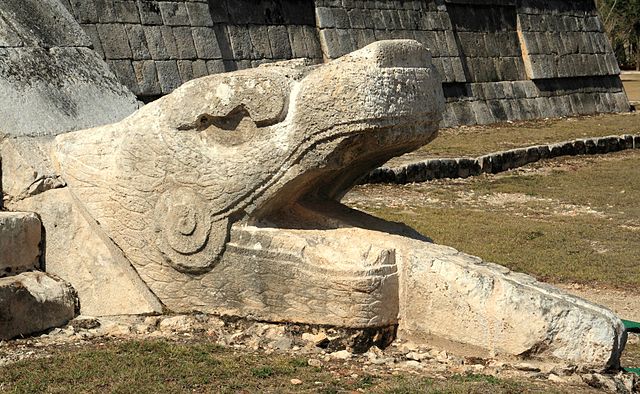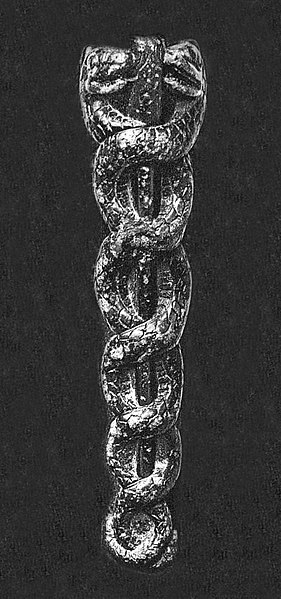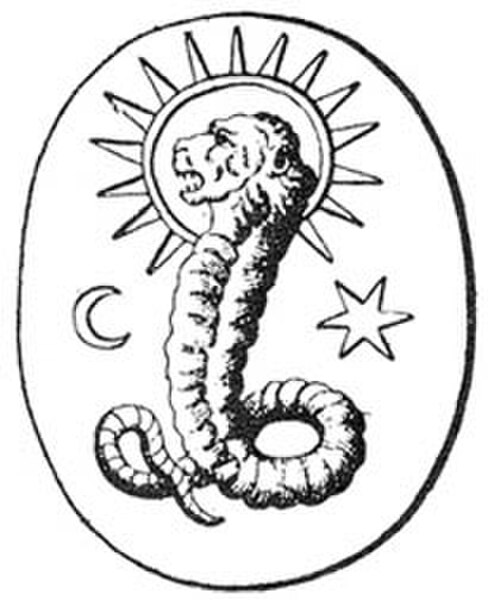K’uk’ulkan, also spelled Kukulkan, is the serpent deity of Maya mythology. It is closely related to the deity Qʼuqʼumatz of the Kʼicheʼ people and to Quetzalcoatl of Aztec mythology. Prominent temples to Kukulkan are found at archaeological sites in the Yucatán Peninsula, such as Chichen Itza, Uxmal and Mayapan.
Kukulkan at the base of the west face of the northern stairway of El Castillo, Chichen Itza
Kukulkan at Chichen Itza during the Equinox.
The Classic Maya vision serpent, as depicted at Yaxchilan.
Ballcourt marker from the Postclassic site of Mixco Viejo in Guatemala. This sculpture depicts Kukulkan, jaws agape, with the head of a human warrior emerging from his maw.
Snake worship is devotion to serpent deities. The tradition is nearly universal in the religions and mythologies of ancient cultures, where snakes were seen as the holders of knowledge, strength, and renewal.
The Caduceus, symbol of God Ningishzida, on the libation vase of Sumerian ruler Gudea, circa 2100 BCE.
Snake motif on Bronze Age pottery from Rumailah, Al Ain.
A lion-faced, serpentine deity found on a Gnostic gem in Bernard de Montfaucon's L'antiquité expliquée et représentée en figures may be a depiction of the Demiurge.
The classic Maya vision serpent, as depicted at Yaxchilan







